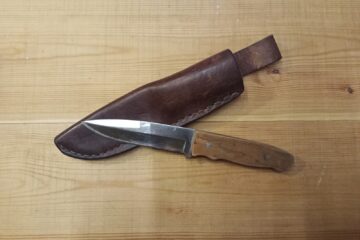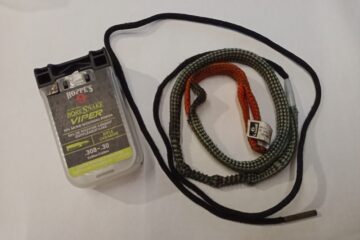On common channels people talk often about how to gather food in nature. Especially in the German outdoor/survival community there is a strong misunderstanding of what brings how many calories.
The kinds of food I cover here is not a complete list, there are more I will cover in further articles. These are just the most common ones
typical food you find in the northern wilderness
In the wilderness you do not find anything which you have normally on the table. It also depends highly on the time of the year what you can find. I will show some things you can gather, hunt and fish in the northern areas. I will only point out the calories, not other nutrition, as in a short survival situation you do not need anything else and calories are the main point. Your body is buffering nutrition, vitamins and minerals for longer periods. The first thing which runs out is normally vitamin c and even with that it takes normally around 6 to 12 weeks until you really get symptoms from a complete vitamin c free diet. So it is not relevant for survival.
blueberries
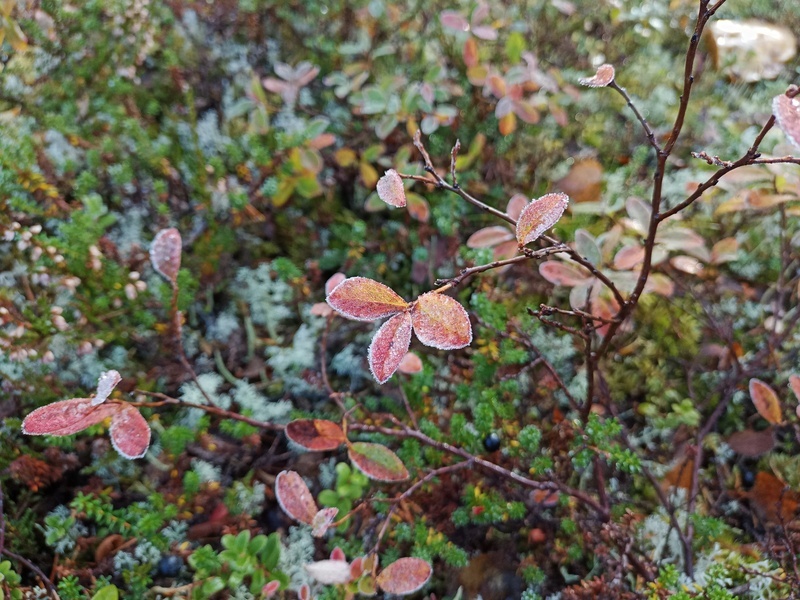
Most people who travel, especially in the north, know berries. Blueberries have about 60 calories per 100g in a normal year. These calories are nearly only sugar. So blueberries have two disadvantages: The picking takes long and eating only sugar is not good. On the other hand they are very widely available during season. There are years where the sugar content is lower, and so the calories.
other berries
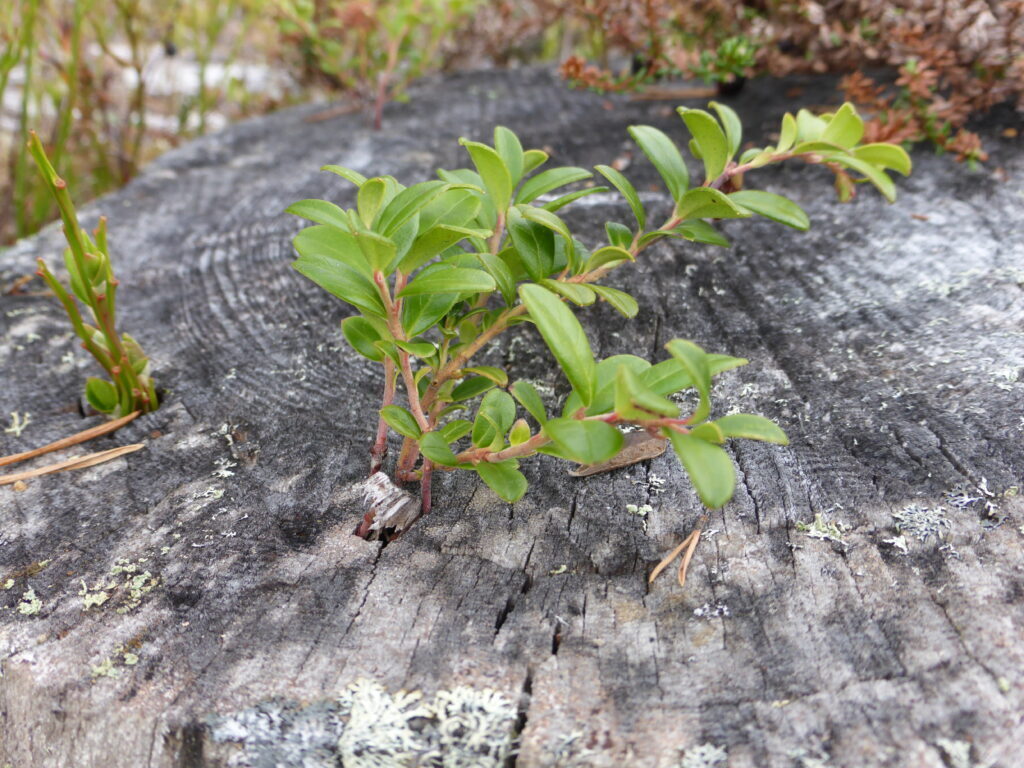
A lot of other berries are also widely available during season. For example lingon berry, crow berry, cloud berry and bunch berry. But all these berries share the same disadvantages as blueberries: Long to pick and only sugar. Additionally their calorie content is lower then the one from blueberry. Some berries survive the frost and the winter and are therefor available for a long time of the year.
fish
Fish is valuable survival food. If you have proper waters you can get a lot of calories without a lot of effort. Especially if have have nets or you do trap fishing you can get huge amounts of food. You can fish year around so it is also reliable regarding the seasons.
In the following table I list some examples of fish and their average calories per 100g.
| fish | cal/100g |
|---|---|
| whitefish | 134 |
| pike | 110 |
| salomon | 180 |
| trout | 103 |
| grayling | 106 |
Especially pike is very good to get calories easy. It is widely available, catch-able year around and often very big.
On the other hand fishing can be very challenging if you do not know the waters and have a lot of experience. Besides that you also need to habe Prosper waters available.
Fish is also the reason why the human mainly developed at the shore of oceans. And even today most people live very close to the oceans. Fishing was the way to get calories before agriculture was developed.
game meat, venison
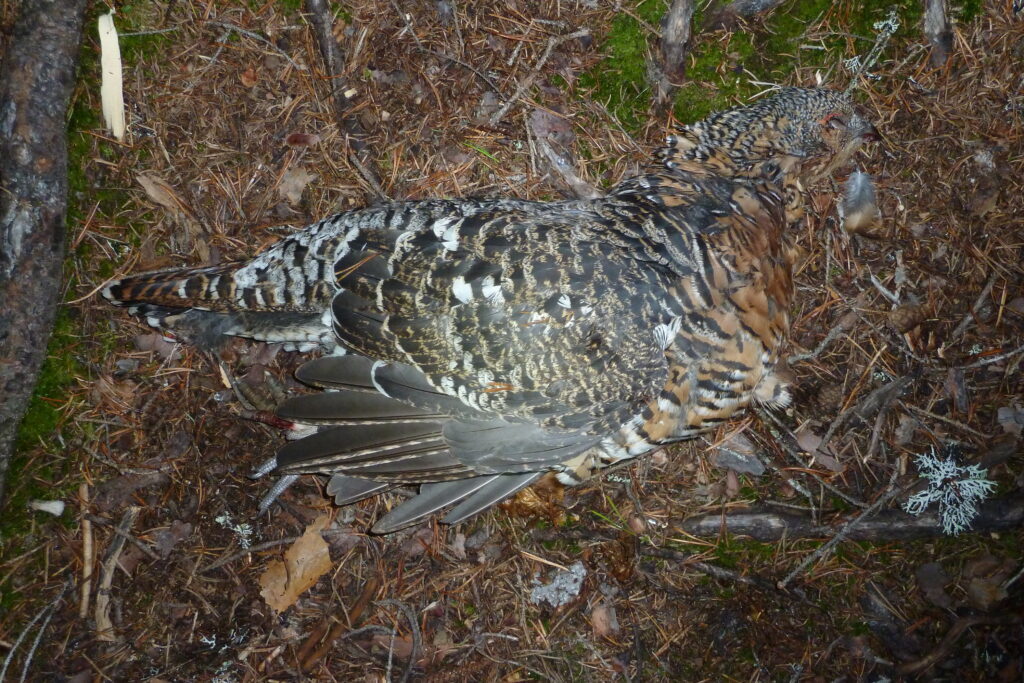
Game meat is often overrated. You often hear people saying a duck has a lot of fat etc. But in reality game meat has pretty low calories ranging from 90 cal/100g to 140 cal/100g. In the wilderness you normally do not have a lot of big ducks and a tufted duck can give you less then 300g of meat. Most wilderness animals are nevertheless not very fat. Besides trapping with a snare wire and self build traps it is normally unlikely that you hunt in a survival situation as you normally need a weapon and sometimes a dog. Snaring is forbidden in most countries or strongly limited.
But if you are prepared you can of course gather huge amounts of calories with hunting. For example if you shoot an adult moose and get 150kg of meat and that equals about 180.000 calories. If you only eat that you can satisfy your complete calorie needs for 45 to 120 days depending on the activity and your weight. Also grouses can be a good source of calories if you have a skilled dog. You can easily get one or two capercaillie per day giving you more calories then you can burn.
For trapping you need to have a lot of experience and good knowledge of the area and terrain. Otherwise chances are low to catch something.
Even I gather a lot of food for myself by hunting I would not consider it as a first choice in a survival situation.
lichen
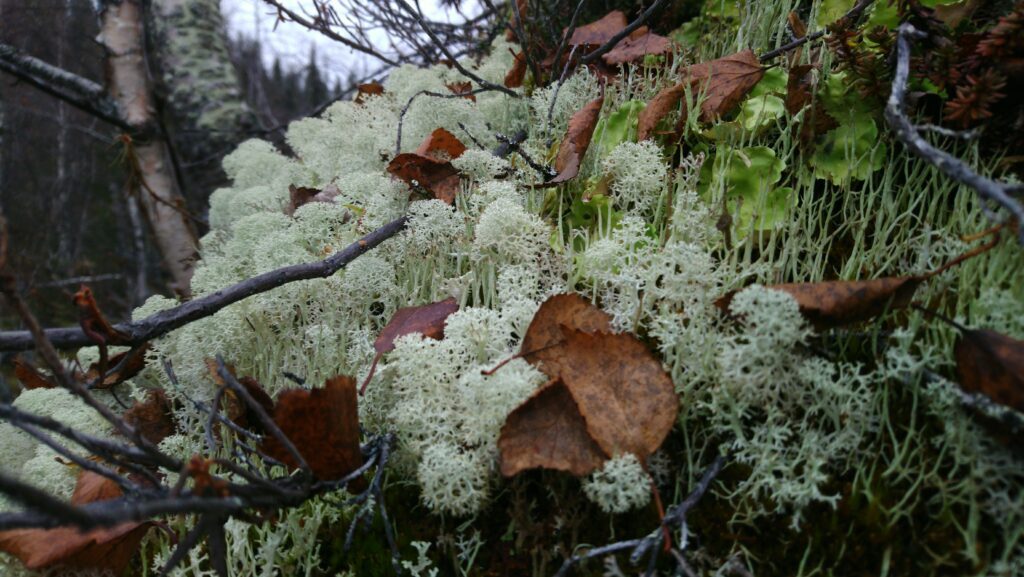
Some lichen is edible but needs to be boiled and has only very few calories. Unfortunately I never found any test of the calorie content but I guess it is very low, at least for the human consumption. Therefor I do not guess it is worth collecting, processing and eating them.
mushrooms
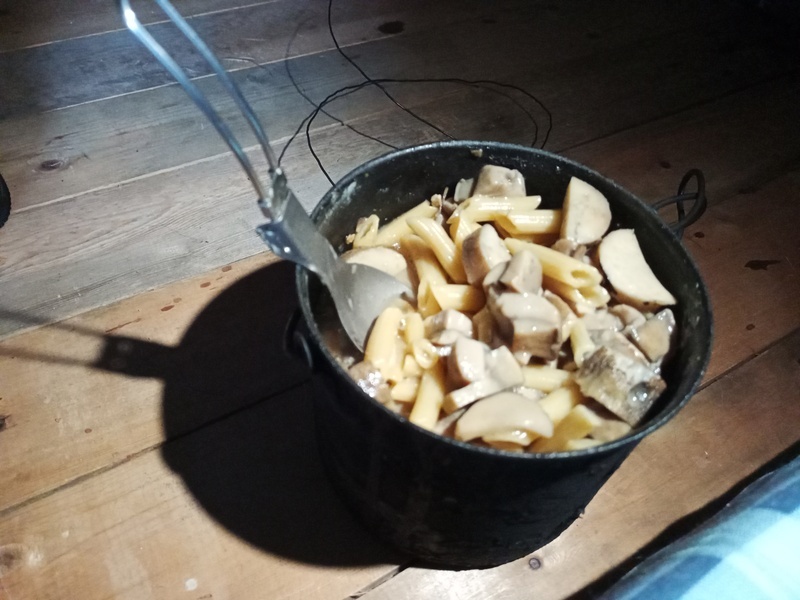
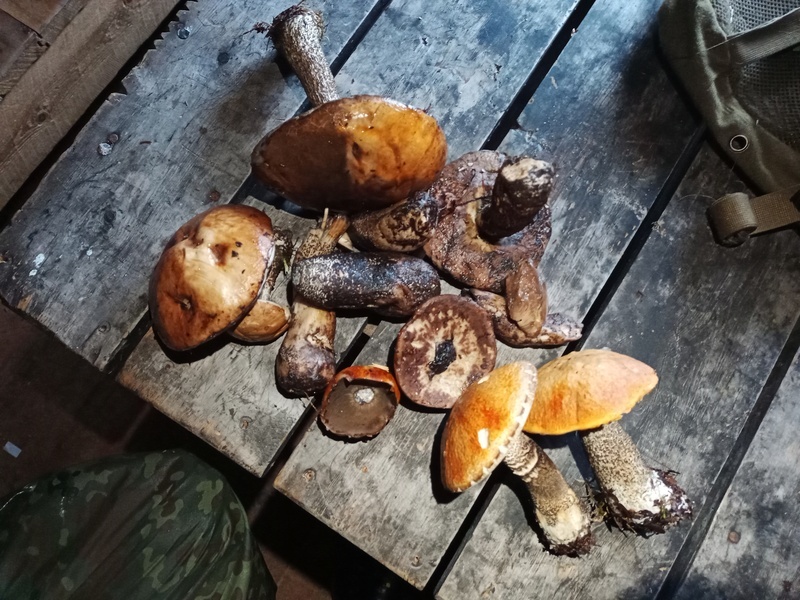
Are mushrooms the mighty survival food? Actually yes! Of course you need to be in the season, but in the north the season can be over 2 months long! But most mushrooms have only around 20cal/100g (ranging from 15 to 60). That doesn’t sound a lot and it isn’t, but it is very easy to gather them. At the right spots you can easily get several kilograms of mushrooms by just walking back to your camp and picking up the last 10 minutes what’s on the forest ground without searching. So you hardly need to put any effort into it.
Birch bolete is very easy to gather and gives you about 19-25cal/100g, mainly as protein. As a side effect they have huge amounts of fiber, 7,3g/100g, keeping your digestion working and going! This is very important as when you only eat, for example, proteins out of fish your digestion hardly can work. Birch bolete grows big and is a very wide spread mushroom. Just take care to boil the mushroom for at least 15 minutes because it contains heat unstable toxins.
So if you do not have any waters, no way to hunt, mushrooms are the easiest way to get calories. Even if you have waters it is normally easier to gather mushrooms instead of trying fishing (if you do not have nets etc.).
